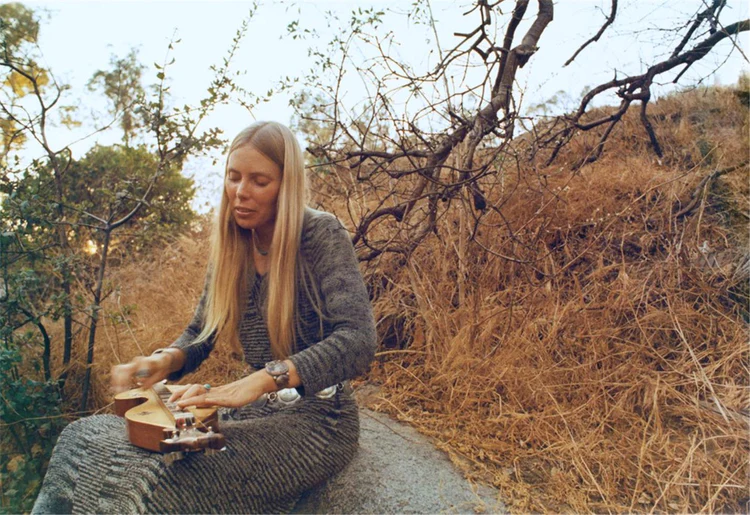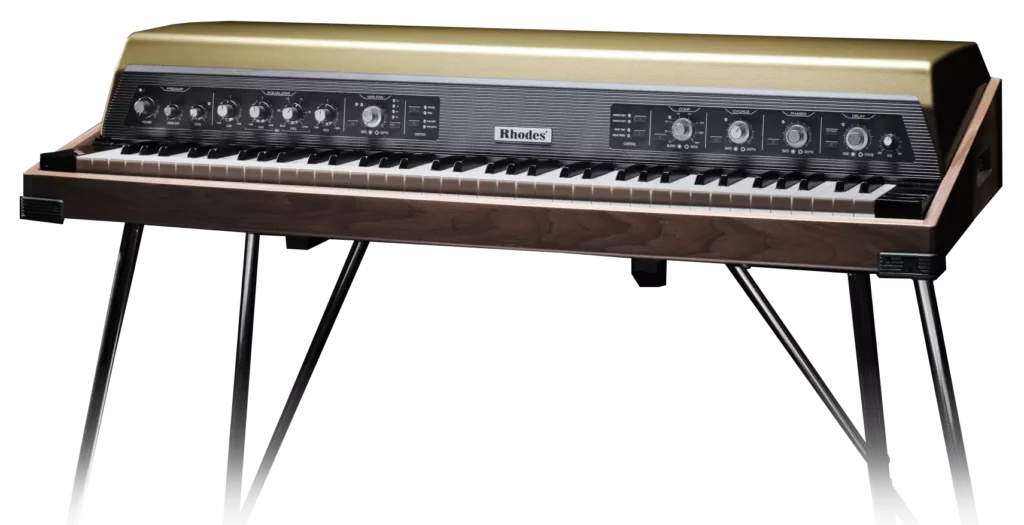Diving into the instruments the inimitable Joni Mitchell has used throughout her storied career.
First bursting onto the scene as one of the most influential singer-songwriters of the 1960’s, and potentially ever, the Canadian born Joni Mitchell proved her immense artistic talent in each of her musical evolutions. While an extremely talented guitarist and pianist, the signature to Joni’s early sound was her soaring voice, which painted pictures with its soulful, breathy architecture.
Read all the latest product & music industry news here.
With her extensive solo music career spanning from the 1960’s to the early 2000’s, Mitchell wrote a plethora of musical masterpieces, ranging in genre from Folk to Jazz. It is therefore no surprise that her legacy has and continues to influence generations of musicians, with some notable mentions being Bob Dylan, Bjork, Prince, Alanis Morissette, and many, many more.
While Joni Mitchell had a rather minimalistic approach to musical gear, and felt deep loyalty to some of her instruments, her arsenal did change over time. As Joni Grew to generate more complex and textural music, she opted for instruments that suited that particular era.
1956 Martin D-28

Having taken piano lessons throughout her childhood, Joni Mitchell didn’t own a guitar until the age of twenty, when she began to teach herself the six-string. After contracting polio as a child, persistent weakness in her left hand meant that Mitchell struggled to make the chord shapes required to play classic folk songs in standard tuning. Mitchell’s discography itself bears a thirty-year absence from standard tuning, stretching from her debut through to her 1998 album, ‘Taming the Tiger’.
“The dear one” as Joni Mitchell affectionately called it, was her 1956 Martin D-28 acoustic – her favourite guitar. This one had a special story, having accompanied a Marine Captain throughout his time in Vietnam. The captain’s tent had been hit by shrapnel, and “when they cleared the wreckage, all that survived was this guitar”.
It is said that Mitchell played the D-28, “on all her early albums”, until it was damaged and stolen off a luggage carousel. “I’ve never found an acoustic that could compare with it.”
Mountain Dulcimer

While she did make use of a variety of alternate tunings (51 to be exact!) on the acoustic guitar, Joni Mitchell also made use of another acoustic string instrument – the Mountain Dulcimer. These instruments have between 3 to 5 strings, are often tuned in an open tuning, and are strummed with the body laid flat on the lap on the musician. Featuring many similarities to the acoustic guitar, dulcimers also have frets for pitch reference.
After making designs with her chemistry teacher to manufacture dulcimers, Joellen Lapidus had moved from New York to the West Coast of the USA, where she handmade and sold Dulcimers in Big Sur. After stumbling upon the idea of the Big Sur Folk Festival, Lapidus set out with a specific goal in mind: “I’ll make a dulcimer and call it the Festival Model. And I’ll sell it to either Joni Mitchell or The Incredible String Band.”
In remarkable accordance with Lapidus’ plan, Joni Mitchell bought Lapidus’ Dulcimer, eventually writing most of ‘Blue’ on the instrument. Having damaged her first Dulcimer, Mitchell bought another from Lapidus to use during the recording of ‘Blue’, with this iteration featuring on the iconic tracks ‘California’, ‘A Case of You’, ‘All I Want’, and ‘Carey’. With Joni Mitchell’s rather simplistic approach to playing the instrument, the midrange frequencies emitted from the Dulcimer perfectly complement the sweetness of her beautiful Mezzo-Soprano voice.
Fender Rhodes Electric Piano

Despite having most of her musical roots in the folk genre, Joni Mitchell was never afraid to venture out from acoustic guitars, dulcimers, acoustic pianos and the harmonica. With her 1970 release of the now-classic ‘Woodstock’, Joni Mitchell employed the more sensual sounds of the Fender Rhodes, with the electric piano to become a mainstay in her music over the coming decades.
The Rhodes piano is somewhat synonymous with Jazz, having featured on classic songs, by Miles Davis, Herbie Hancock, and many other Jazz legends throughout the 20th century. Mitchell’s use of the Fender Rhodes as early as 1970 is somewhat foreboding, as her music throughout the ‘70s and ‘80s incorporated more elements of Jazz than folk – seeing a departure from the genre that made her famous. By enlisting the likes of Jaco Pastorius and Charles Mingus throughout her discography, Joni’s musical sessions harboured some of the most influential jazz musicians of all time.
The electric piano featured quite heavily on Mitchell’s albums throughout the ‘70s, with some notable examples being ‘Help Me’ from ‘Court and Spark’, and ‘Sweet Sucker Dance’, with the latter being played by Herbie Hancock.
Ibanez George Benson & Roland Jazz Chorus

To facilitate the jazzier sounds of Joni Mitchell’s phase at the time, she began to use George Benson Model Ibanez electric guitars. These are the stereotypical jazz-boxes; featuring a hollow body, wooden bridge, and mini humbuckers – the idiomatic choice of a jazz guitarist. This style of guitar is renowned for its woody sound, providing the opportunity for vocal-like solos by simply rolling the tone down.
To facilitate her use of different tunings, Mitchell performed with five Ibanez George Benson guitars, each set up with a unique set of string gauges to best suit the change in string tension that each tuning brought. She played these through the iconic Roland Jazz Chorus amplifiers, so that “she could replicate her Hejira sound in performance”.
While Joni Mitchell’s terrific success as a songwriter is undoubtedly due to her expert musicianship, and uncanny ability to pen a unique song with touching lyrical content, her careful selection of musical instruments enabled her to get these song ideas out of her head. Having chosen these instruments to due ergonomic advantages, to suit her latest ideas, and to reproduce her studio tonalities on the stage, Joni Mitchell succeeded in her continuous musical evolution, and sustained songwriting quality.
Read all about the success of Joni Mitchell’s first show in two decades here.

